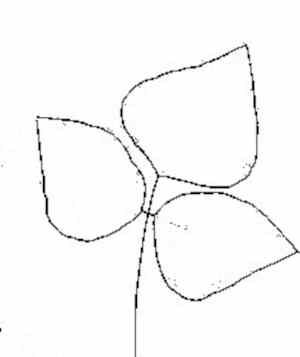Yummy American Hogpeanut

American Hogpeanut (Amphicarpaea bracteata) is vine that grows in Eastern North America from Canada all the way South to Florida and Texas and can be found as far West as Montana! As the common name suggest it is a member of the pea family.
American Hogpeanut can be found in woods, meadows and even open prairies, wherever enough water is available. To help with identification this vine does not have tendrils to help it climb. Instead it wraps itself in coils around whatever it touches to gain support.
The leaves like many of its close relatives grow as a trifoliate leaf. Meaning it is a compound leaf that has three leaflets. The triple leaves are arrange on the stem in an alternate manner. They do not ever grow one leaf directly opposite of another leaf.
The individual leaflets are very broad and are almost as wide as they are long. Hog-peanut leaves are slightly furry or hairy.
The pea pods produced by the plant are typical pods and usually contain 3 or 4 seeds. The smallish flowers have five petals that range in color from white to pink or purple. The seed pods are green but turn brown but are not edible unless cooked.
This crazy plant also produces a different kind of flower on the lower portions of the plant which are self fertilized before they even open! These lower level flowers produce a pod with a single seed that buries itself in the ground, and these are the seeds which are edible. just like a true peanut plant does. If you wondered where this plant gets its name, well know you know and the hogs love digging these seeds up. And now you know the rest of the story.
The seeds of this plant that are buried are edible raw or boiled. They are often boiled to help with removal of the hulls.
As you would expect being a climbing vine they grow well in shade, but they will grow great in full sun as well. Full sun provides more hours of photosynthesis, but partial shade help with keeping the soil moist, which is required for growth as well.
You aren't likely to survive off of this plant, but it is a welcome addition that is for sure.
